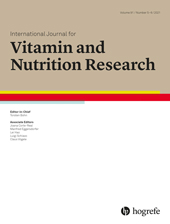Abstract
Abstract. Wound healing consists of a series of highly orderly overlapping processes characterized by hemostasis, inflammation, proliferation, and remodeling. Prolongation or interruption in each phase can lead to delayed wound healing or a non-healing chronic wound. Vitamin A is a crucial nutrient that is most beneficial for the health of the skin. The present study was undertaken to determine the effect of vitamin A on regeneration, angiogenesis, and inflammation characteristics in an in vitro model system during wound healing. For this purpose, mouse skin normal fibroblast (L929), human umbilical vein endothelial cell (HUVEC), and monocyte/macrophage-like cell line (RAW 264.7) were considered to evaluate proliferation, angiogenesis, and anti-inflammatory responses, respectively. Vitamin A (0.1–5 μM) increased cellular proliferation of L929 and HUVEC (p < 0.05). Similarly, it stimulated angiogenesis by promoting endothelial cell migration up to approximately 4 fold and interestingly tube formation up to 8.5 fold (p < 0.01). Furthermore, vitamin A treatment was shown to decrease the level of nitric oxide production in a dose-dependent effect (p < 0.05), exhibiting the anti-inflammatory property of vitamin A in accelerating wound healing. These results may reveal the therapeutic potential of vitamin A in diabetic wound healing by stimulating regeneration, angiogenesis, and anti-inflammation responses.
References
1 . Wound healing: a cellular perspective. Physiol Rev. 2019;99(1):665–706.
2 . Comparative study of the in vitro antioxidant properties of Methanolic extracts of Chromolaena odorata and Ageratum conyzoides used in wound healing. Ann Sci. 2019;6(1):8–12.
3 . Wound healing: an overview. Plast Reconstr Surg. 2006;117(7S):1e-S–32e-S.
4 Epithelialization in wound healing: a comprehensive review. Adv Skin Wound Care. 2014;3(7):445–64.
5 . Endothelial dysfunction and diabetes: effects on angiogenesis, vascular remodeling, and wound healing. Int J Vasc. 2012;2012.
6 . Tissue changes following deprivation of fat-soluble A vitamin. J Exp MEd. 1925;42(6):753–77.
7 . Oral retinoids in the treatment of seborrhoea and acne. Dermatology. 1998;196(1):140–7.
8 . Topical retinoids in acne vulgaris. Am J Clin Dermatol. 2008;9(6):369–81.
9 . Topical tretinoin improves photoaged skin: a double-blind vehicle-controlled study. JAMA. 1988;259(4):527–32.
10 . The role of vitamin A in wound healing. Nutr Clin Pract. 2019;34(5):695–700.
11 The in vivo and in vitro diabetic wound healing effects of a 2 – herb formula and its mechanisms of action. J Ethnopharmacol. 2011;134(3):831–8.
12 Modulation of cardiac optogenetics by vitamin A. BioFactors. 2019;45(6):983–90.
13 . Cellular and molecular mechanisms of repair in acute and chronic wound healing. Br J Dermatol. 2015;173(2):370–8.
14 . Current use and future potential role of retinoids in dermatology. Drugs. 1997;53(3):358–88.
15 . A highly potent antiangiogenic activity of retinoids. Cancer letters. 1989;48(2):157–62.
16 All-trans retinoic acid induces in vitro angiogenesis via retinoic acid receptor: possible involvement of paracrine effects of endogenous vascular endothelial growth factor signaling. Endocrinol. 2007;148(3):1412–23.
17 . Effect of steroid hormones and retinoids on the formation of capillary-like tubular structures of human microvascular endothelial cells in fibrin matrices is related to urokinase expression. Am J Hematol. 1998;92(3):927–38.
18 Retinoids induce fibroblast growth factor-2 production in endothelial cells via retinoic acid receptor α activation and stimulate angiogenesis in vitro and in vivo. Circulation. 2001;88(4):e38–e47.
19 . The pre-protective effect of vitamin A on LPS-induced oxidative stress of bovine mammary epithelial cells. Ital J Anim Sci. 2018;17(4):959–66.


